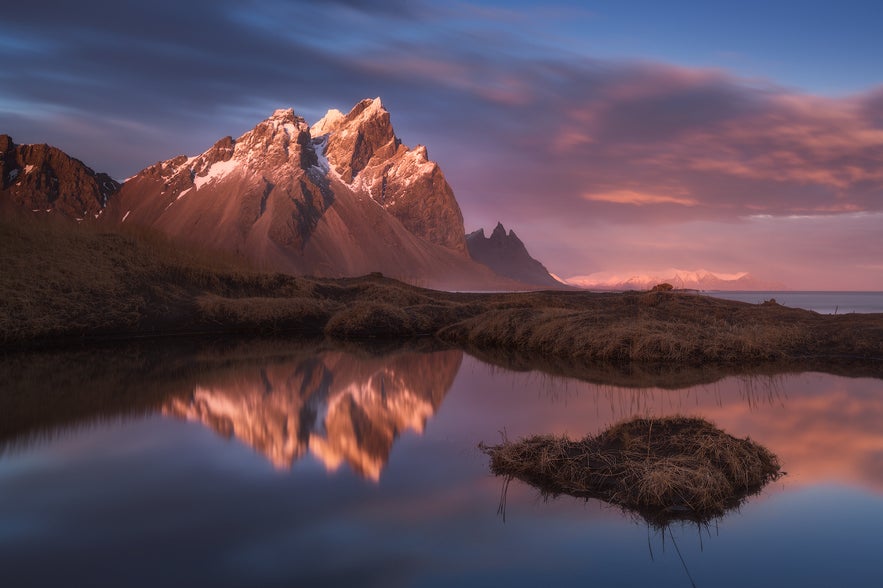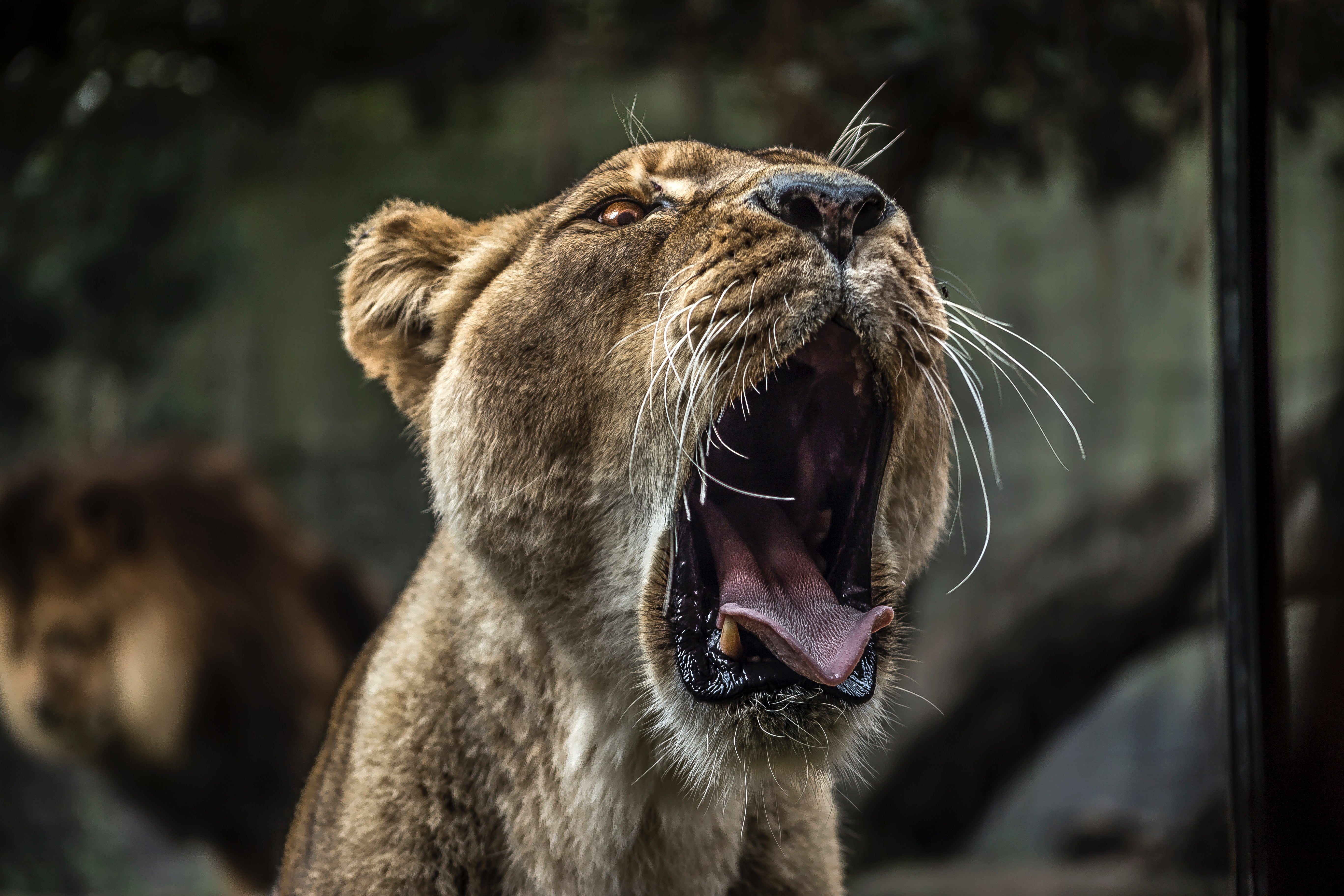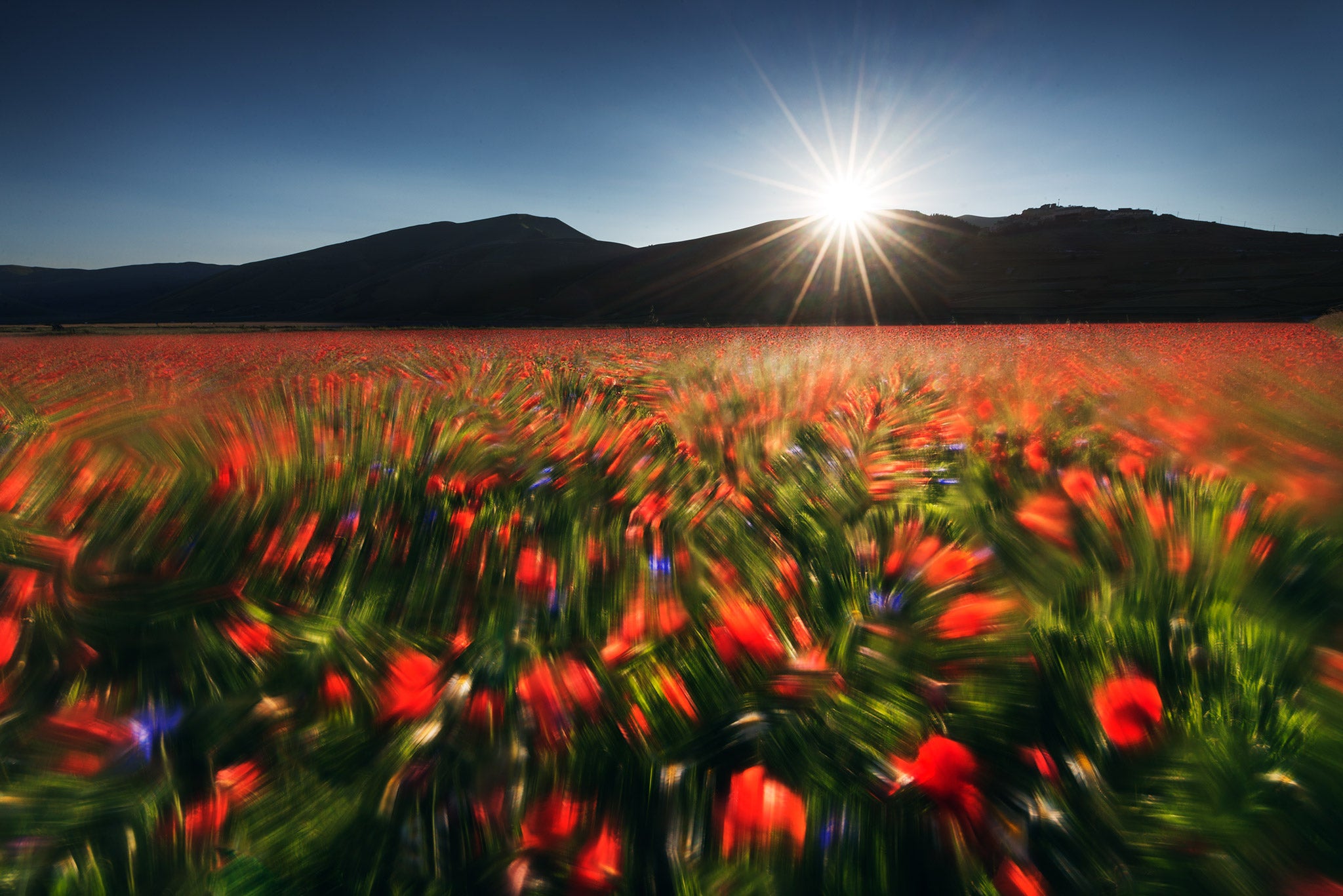
If there is one thing that will really make your photos of Iceland stand out, it is the power of an incredible foreground. In landscape photography, having an interesting foreground for the eye to focus on is important, as it can add depth to your photos and make your audience feel as though they are immersed in the scene themselves.
- Learn about How to Use Foreground to Add Depth in Landscape Photography
- Discover How to Create Portraits with a Black Background
- Check out The Most Popular Destinations for Photography Around the World
Strong foregrounds can create context whilst providing a sense of perspective, paving the way for visual cues to describe the stories behind your photographs. So to start improving the compositional power of your shots, give some thought to what is actually happening in the front of your frame and use it to your utmost advantage.
When utilised correctly, the technique of placing emphasis on the foreground can elevate a flat, one-dimensional shot of Iceland into something that is truly spectacular.
Examples of Foregrounds in Landscape Photography
 This cone of snow makes for an effective foreground within an ice cave in Iceland. Photo by: 'Iurie Belegurschi'.
This cone of snow makes for an effective foreground within an ice cave in Iceland. Photo by: 'Iurie Belegurschi'.
Consider the following images of famous landmarks around Iceland. These powerful photos all have one thing in common: they include interesting subjects in the foreground.
From Jökulsárlón glacier lagoon to the colourful mountains of Landmannalaugar in the Icelandic Highlands, you are bound to find an amazing foreground to concentrate on if you take the time to scout out your surroundings before taking a shot.
 A person in the foreground can give your photos a sense of scale in vast places such as Landmannalaugar. Photo by: 'Iceland Photo Tours'.
A person in the foreground can give your photos a sense of scale in vast places such as Landmannalaugar. Photo by: 'Iceland Photo Tours'.
Even when the focus of your image is the Northern Lights, the inclusion of a fabulous foreground can make the scene seem even more special.
 This piece of ice in the foreground at Jokulsarlon Glacier Lagoon anchors the shot. Photo by: 'Iurie Belegurschi'.
This piece of ice in the foreground at Jokulsarlon Glacier Lagoon anchors the shot. Photo by: 'Iurie Belegurschi'.
Now that you’ve seen some examples of photos with effective use of foregrounds, how can you translate this important photography technique into your own work? Let’s look at some tips and tricks for capturing interesting foregrounds that will make your photos of Iceland stand out from all of the rest.
Tip #1: Use a Wide Angle Lens
 Wide angle distortion makes these purple lupines in Iceland stand out. Photo by: 'Iurie Belegurschi'.
Wide angle distortion makes these purple lupines in Iceland stand out. Photo by: 'Iurie Belegurschi'.
A wide angle lens will allow you to capture a larger expanse of the Icelandic landscape. It will also mean that you can create drama by placing more emphasis on the foreground elements of your composition.
The reason for this is that wide angle lenses have a natural distortion, which tends to increase the sense of depth and exaggerate the distance in a composition. The resulting effect is that elements in the foreground will appear to be more prominent, whilst distant details, such as mountains, are reduced to fit comfortably within the frame.
To make the most of this type of distortion when shooting with a wide angle, make sure that you lean in close to your foreground subject.
Tip #2: Check for Distractions
 It can be difficult to compose a shot with all the ice at Jokulsarlon! Photo by: 'Iurie Belegurschi'.
It can be difficult to compose a shot with all the ice at Jokulsarlon! Photo by: 'Iurie Belegurschi'.
Before you take a photo, check the foreground for any distractions that might detract from your composition. This includes looking for distractions at the edges of your shot.
The foreground will only be powerful if it helps to tell your story. If there is something distracting within it, or if the foreground is a distraction itself, then you may need to shift your focus or move around until you can find a composition that is appealing.
Truth be told, you may even have to relinquish the composition and look for a different foreground that adds to the impact of your image, rather than diminishing it.
 Move around until you find the best composition. Photo by: 'Kaspars Dzenis'.
Move around until you find the best composition. Photo by: 'Kaspars Dzenis'.
It is important to keep moving when you are unable to minimise the distractions in your foreground, or if you are simply unable to find one that is effective! Don’t keep thinking that where you are standing is the best spot. Often, a simple shift to the left or the right, or even up or down, can eliminate distractions.
Tip #3: Get Down Low
 Get down low to capture detail, such as these patterns in the ice at Kirkjufell. Photo by: 'Iurie Belegurschi'.
Get down low to capture detail, such as these patterns in the ice at Kirkjufell. Photo by: 'Iurie Belegurschi'.
How many times have you stood with your camera on a tripod extended as far as it will go? When you limit yourself to taking photos at this angle, chances are that you’ll miss out on some pretty amazing foregrounds.
The world looks very different when you get down low. Try crouching down with your camera, or lowering your tripod when you are searching for a composition. You’ll find that the perspective of your shots can be changed at these angles quite remarkably, especially when you are using a wide-angle lens.
This technique is very useful in Iceland, as it will accentuate the foreground and allow you to focus on interesting elements, such as wildflowers, moss, cracks in the ice or patterns in the sand. Plus, if the sky is dramatic at the time, you’ll be able to fit much more of it into your frame by being at a lower angle and pointing slightly up!
One thing that you’ll need to be wary of when using this technique is the location of your tripod legs. It is very likely that when you get down low, you will need to spread the legs of your tripod out further than they usually go. If you’re not careful, then you may accidentally end up with one or two of the legs in your shot. Again, this is where the previous point of checking for distractions comes in handy!
Tip #4: Raise the Horizon
 Raising the horizon can give more emphasis to your foreground, such as here at the Diamond Beach in Iceland. Photo by: 'Iceland Photo Tours'.
Raising the horizon can give more emphasis to your foreground, such as here at the Diamond Beach in Iceland. Photo by: 'Iceland Photo Tours'.
Whether you get down low or not, another way to bring attention to the foreground is to raise the horizon. To do this, place the horizon in the top third of your frame by pointing your camera at an angle slightly downwards. Doing so will give more emphasis to the foreground, which will effectively occupy the lower two thirds of the frame.
Now you can really start to fill the foreground area of your shot with interesting subjects that will lead in to the focus point of the entire image.
Tip #5: Look for Leading Lines
 Leading lines in a path at the Black Church of Budir in Snæfellsnes. Photo by: 'Iurie Belegurschi'.
Leading lines in a path at the Black Church of Budir in Snæfellsnes. Photo by: 'Iurie Belegurschi'.
When looking for subjects to fill your foreground, keep your eyes peeled for leading lines that will draw your viewer’s eye into your image.
A leading line is any eye-catching element or point of interest that helps to guide the viewer’s eye on a path around your shot. These types of lines can be vertical, diagonal, or even curved.
While some are man-made, such as the path leading towards the famous Búðakirkja, others may simply be found occurring naturally in the environment, like swirls of ice within an ice cave.
 The structures of ice caves also make great leading lines. Photo by: 'Iurie Belegurschi'.
The structures of ice caves also make great leading lines. Photo by: 'Iurie Belegurschi'.
Even circular motions of incoming waves around a chunk of ice at the ice beach may be regarded as leading lines.
 Think outside the box and use wave motions as leading lines. Photo by: 'Iurie Belegurschi'.
Think outside the box and use wave motions as leading lines. Photo by: 'Iurie Belegurschi'.
If you are able to find them and to use them in your shot, leading lines are an excellent way of directing attention towards the focus point of your photo.
Tip #6: Experiment with Focus
Adjusting your focus in landscape photography can have a huge effect on the impact of your foreground.
While a sharp and well-focused foreground with an out-of-focus background can completely centre the attention on the subject of your shot, keeping the entire image in-focus with a well-composed and strong foreground may have a deeper impact.
 If you can't get everything in focus from foreground to background, then you may need to focus stack. Photo by: 'Kaspars Dzenis'.
If you can't get everything in focus from foreground to background, then you may need to focus stack. Photo by: 'Kaspars Dzenis'.
At times, it can be difficult to keep everything in focus, particularly when there is significant distance between your foreground subject and objects in the background, such as cliffs or mountains. To keep everything in focus, try focus-stacking, which involves taking multiple images at different points of focus. You can then blend these images digitally in post-processing to give a single resulting image with a greater depth of field.
If digital blending isn’t your style, then try a technique called ‘hyperfocal distance’. The hyperfocal distance is a point which will allow you to keep most of the scene sharp and clear. When your lens is focused at this point, everything that falls at distances from half of this out to infinity will appear to be sharp in the image.
To calculate the hyperfocal distance, use an app like PhotoPills, which harbours an inbuilt hyperfocal distance table to make the task a whole lot easier. This table is extended by an augmented reality view in the app to help you visualise further exactly where you need to focus.
Tip #7: Exposing Correctly for an Effective Foreground
 Make sure you've exposed correctly, particularly if you have a bright sky and shadows in the foreground. Photo by: 'Albert Dros'.
Make sure you've exposed correctly, particularly if you have a bright sky and shadows in the foreground. Photo by: 'Albert Dros'.
Finally, you’ve found an amazing foreground with fascinating leading lines, you’ve gotten down as low as you can go with the horizon in the top third of the frame, checked for distractions and focused your shot. You take your photo but... the foreground turns out too dark, while the sky is too bright!
Getting the exposure right is a common issue in landscape photography, particularly in the sometimes harsh environment of Iceland.
 Graduated neutral density filters can help you to balance the exposure between your foreground and background. Photo by: 'Iurie Belegurschi'.
Graduated neutral density filters can help you to balance the exposure between your foreground and background. Photo by: 'Iurie Belegurschi'.
To ensure that your photo is well-exposed, try taking two different images – one exposed for the foreground and the other exposed for the sky – which you can then merge together later in post-processing. Another option is to use a graduated neutral density filter to balance the light between the sky and the foreground. Both techniques will ensure that you end up with a well-exposed and effective shot.
Of course, not every scene in Iceland is suitable for placing emphasis on the foreground. However, if you can find a creative composition that is able to make use of one, then you are likely to end up with an image that is more engaging and which has extra appeal to your audience. Having an incredible foreground can really make your photos of Iceland stand out, creating depth and adding another sense of dimension. So for consistently powerful images that will help you to tell your story, keep your eyes open for elements that you can feature in the foreground and use them to your utmost advantage.
About the author: Serena Dzenis is a landscape photographer based in Iceland. You can find more of her work on her website or by following her on Facebook and Instagram.
Practice your landscape photography skills by scouting for interesting compositions in Iceland! Check out our winter photography tours and workshops.












